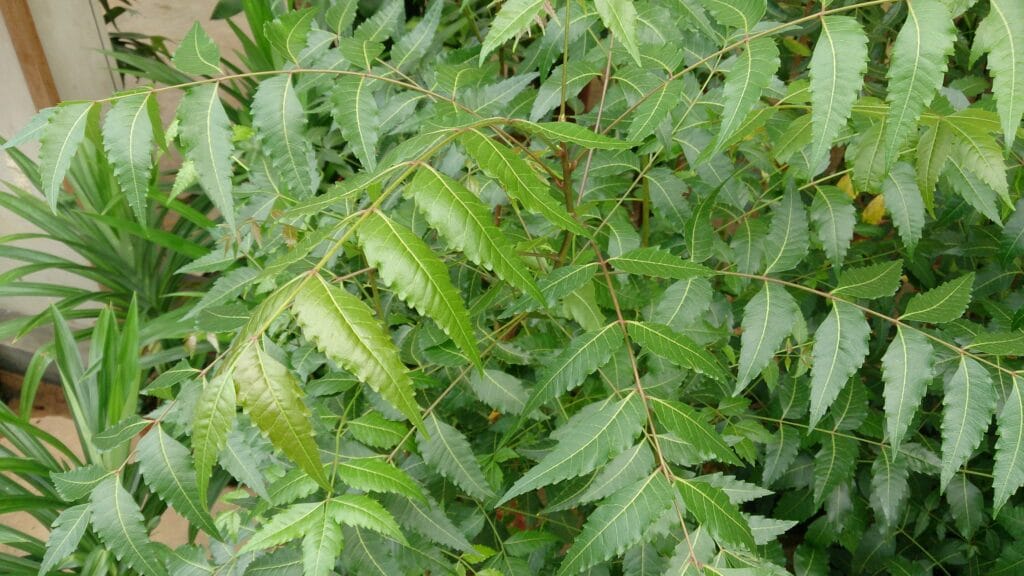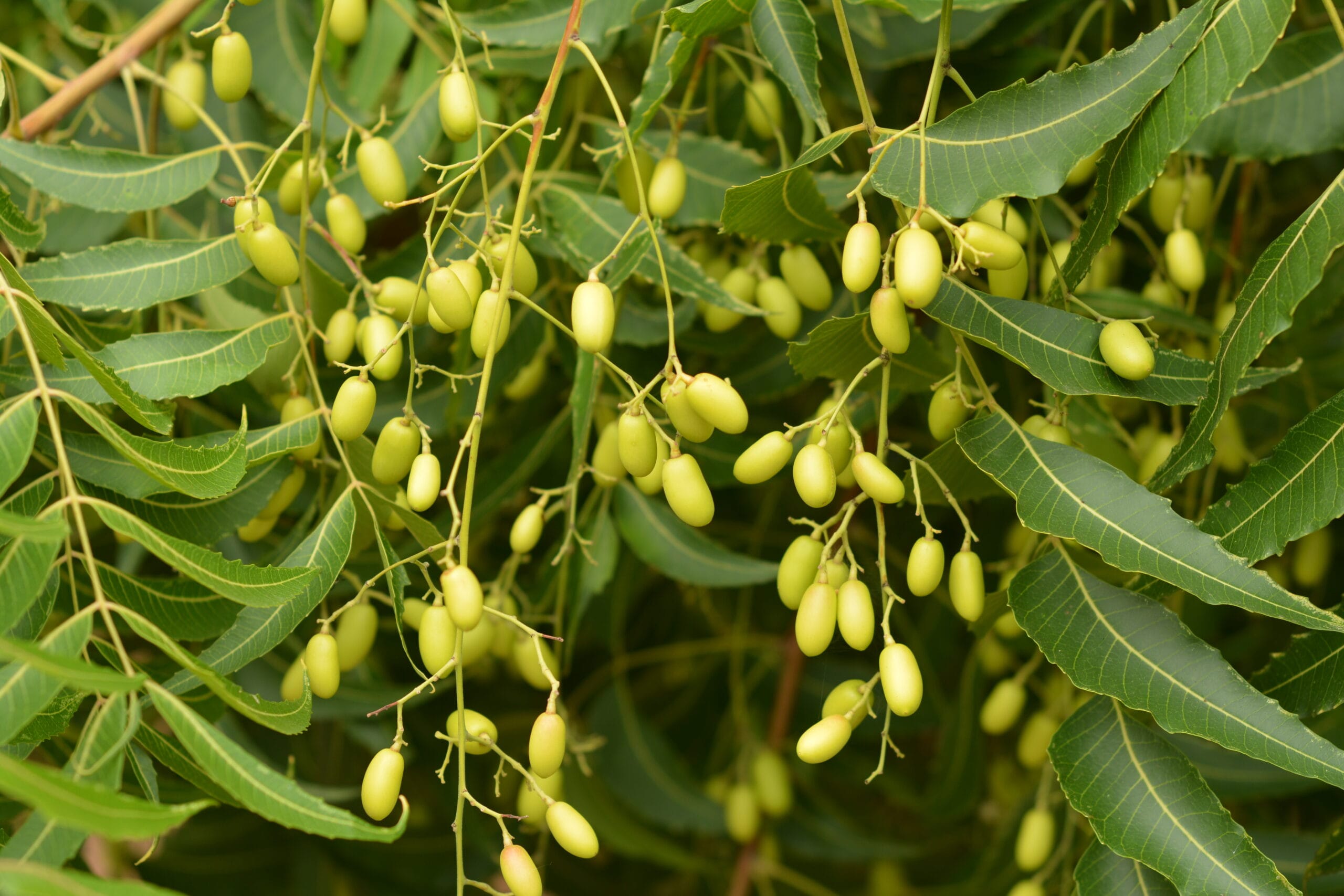The Neem tree (Azadirachta indica) is often referred to as “The Miracle Tree” for its numerous benefits and uses.
A native to the Indian subcontinent, the Neem tree has been celebrated for centuries for its medicinal, agricultural, and environmental properties.
Its potential to support human health, improve soil quality, and combat environmental challenges makes it an invaluable resource for sustainable development.
Additionally, Neem’s versatility in providing natural remedies and sustainable alternatives to synthetic products has made it a cornerstone in traditional and modern practices.
With its unique combination of ecological resilience and healing properties, the Neem tree is a testament to the power of nature in addressing some of the world’s pressing challenges.
In this article, we will explore the numerous benefits of Neem tree, highlighting its importance in promoting health, sustainability, and ecological balance.
History Of Neem Tree
Neem has been an integral part of traditional Indian medicine (Ayurveda) for over 4,000 years.
Ancient texts, such as the Atharva Veda, document its use in healing practices and rituals. In Sanskrit, Neem is called “Arishtha,” meaning “reliever of sickness,” and it was considered a sacred plant in many cultures.
Historical records reveal that Neem was used not only in medicine but also in agriculture, where its pest-repellent properties were highly valued. Its use spread from the Indian subcontinent to regions in Africa, the Middle East, and Southeast Asia through trade and cultural exchanges.
Over time, the Neem tree gained recognition worldwide, particularly during the 20th century when scientific studies began to validate its traditional uses and explore its potential in pharmaceuticals and sustainable farming practices.
Characteristics Of Neem Tree
Neem is a fast-growing, evergreen tree that can reach heights of up to 30 meters and live for over 200 years.

It has a wide, spreading crown and can thrive in arid and semi-arid regions, making it drought-resistant.
Its pinnate leaves, small white flowers, and bitter-tasting fruits are all parts of the tree that contribute to its multifaceted uses. Neem is hardy and can grow in poor soils, often improving soil fertility through its leaf litter.
Environmental Benefits
Here are some of the Environmental Benefits of Neem Tree:
- Air Purification: Neem absorbs carbon dioxide and releases oxygen, contributing to air purification.
- Soil Fertility: Neem leaves and bark enrich soil quality, acting as natural fertilizers.
- Pest Control: Its natural insect-repellent properties reduce the need for synthetic pesticides in agriculture.
- Reforestation: Neem’s resilience makes it a valuable species for afforestation projects in degraded lands.
- Water Conservation: Its deep root system helps prevent soil erosion and improves water retention in arid regions.
Benefits Of Neem Tree
Lets explore some of the Benefits of Neem Tree:

- Medicinal: Neem is a powerhouse of bioactive compounds with antifungal, antibacterial, and antiviral properties. It is used to treat skin disorders, boost immunity, and manage diabetes. It also supports oral health, with Neem twigs traditionally used as toothbrushes.
- Agricultural: Neem-based products like oil and cakes act as organic pesticides and fertilizers. They not only repel pests but also improve crop yield.
- Cosmetic: Neem extracts are widely used in soaps, shampoos, and skincare products for their antimicrobial properties. They help combat acne, dandruff, and other skin and scalp issues.
- Veterinary Medicine: Neem is used to treat parasitic infections and improve the overall health of livestock.
- Anti-Malarial: Neem has shown promise in reducing the spread of malaria through its ability to repel mosquitoes and other insects.
Uses
- Health: Neem leaves are used in teas and tonics to detoxify the body. Neem oil is applied to wounds and skin ailments.
- Agriculture: Neem cake (residual pulp after oil extraction) is used as a natural fertilizer.
- Cosmetics: Neem-infused products protect skin from acne, dandruff, and infections.
- Animal Care: Neem is used in veterinary medicine to treat parasites and infections in livestock.
- Home Remedies: Neem leaves are boiled and used in baths to alleviate skin irritations and infections.
Economic Significance
Neem trees have a significant economic impact, particularly in countries like India, where they are cultivated for medicinal and agricultural purposes.
Neem-based products, such as oil, powders, and soaps, form a thriving industry, supporting rural livelihoods and generating export revenue.
Additionally, the global demand for organic and sustainable products has further boosted the Neem industry, making it a vital component of green economies.
Conservation and Challenges
Despite its benefits, Neem trees face threats from urbanization and deforestation. Conservation efforts include sustainable farming, awareness programs, and integrating Neem into reforestation projects.
Challenges like overharvesting and lack of research funding need to be addressed to preserve this vital resource. Governments and organizations must promote policies that encourage sustainable harvesting and cultivation of Neem.
Interesting Facts Of Neem Tree
Here are some interesting facts about Neem Tree:

- Neem is often referred to as the “Village Pharmacy” in rural India.
- The United Nations declared Neem as the “Tree of the 21st Century” for its versatility.
- Its oil is used in traditional lamps for lighting.
- Neem can survive temperatures as high as 50°C, making it ideal for arid climates.
- The Neem tree’s bark has been used in traditional medicine to treat fevers and malaria.
- It is considered a natural “pest repellent” tree, often planted around homes to keep insects away.
Culinary Uses Of Neem Tree
Neem leaves and flowers are incorporated into traditional dishes in some cultures.

These dishes often serve a medicinal purpose due to Neem’s detoxifying properties.
Traditional Dishes
- Neem Leaf Curry: A traditional dish made with tender Neem leaves, often consumed during seasonal changes to boost immunity.
- Neem Flower Soup: A delicacy in southern India, this soup is believed to cleanse the digestive system.
- Neem Tea: A bitter tea made from Neem leaves, often consumed as a detoxifying drink.
Nutritional Benefits
While Neem is not typically consumed as a staple food, its leaves and extracts are rich in antioxidants, flavonoids, and nutrients that support overall health. Neem’s compounds help in detoxification, improving digestion, and boosting immunity.
Caution
While Neem is renowned for its many benefits, it is important to exercise care in its use.
Excessive consumption or overuse in topical applications can lead to adverse effects, such as nausea, dizziness, or skin irritation, particularly in individuals with sensitive skin or underlying health conditions.
Pregnant women are advised to avoid Neem products, as some compounds in Neem may pose risks during pregnancy. Likewise, breastfeeding mothers should consult with a healthcare provider before use.
Individuals with autoimmune conditions, diabetes, or those taking specific medications should seek medical advice, as Neem’s potent properties may interact with certain treatments.
Due to its strong potency, children should avoid high doses of Neem products, as their developing bodies may respond differently to its effects.
Proper dosage and usage guidelines should always be followed, and consulting a qualified healthcare professional is recommended to ensure safe and effective use of Neem-based remedies.
Conclusion
The benefits of Neem tree (Azadirachta indica) exemplifies the harmony between nature and human well-being.
Its vast benefits span health, agriculture, and environmental conservation, making it a symbol of sustainability.
Neem has not only been a cornerstone of traditional medicine but also a beacon of hope for modern challenges, offering solutions that are eco-friendly and effective.
By preserving and promoting the Neem tree, we can ensure its legacy as a miracle tree continues to benefit future generations.
Governments, researchers, and communities must work together to safeguard this incredible resource, ensuring that its potential is fully realized for the health of both people and the planet.
Also Read: Benefits of Kamagong (Diospyros blancoi) Exploring the Wonders of Velvet Apple
Well, what do you think about the article?
Did you enjoy reading “Benefits of Neem Tree (Azadirachta indica) Uncovering Its History, Benefits, Uses, Facts, and Safety“?
We really hope that you have found this article informative and engaging. If you have any thoughts or comments about this post, please feel free to share them in the comment section below. We appreciate your feedback and would be glad to hear from you.
To see more content like this check the gardening section of Money For My Beer.

